You will love this classic recipe for Apricot Jam, made with sweet, ripe, juicy apricots at the height of their season. It is the ultimate way to preserve this delicious stone fruit to enjoy throughout the coming months. All you need are three ingredients to make this delicious jam: just fresh apricots, sugar and lemon juice – no pectin is required.
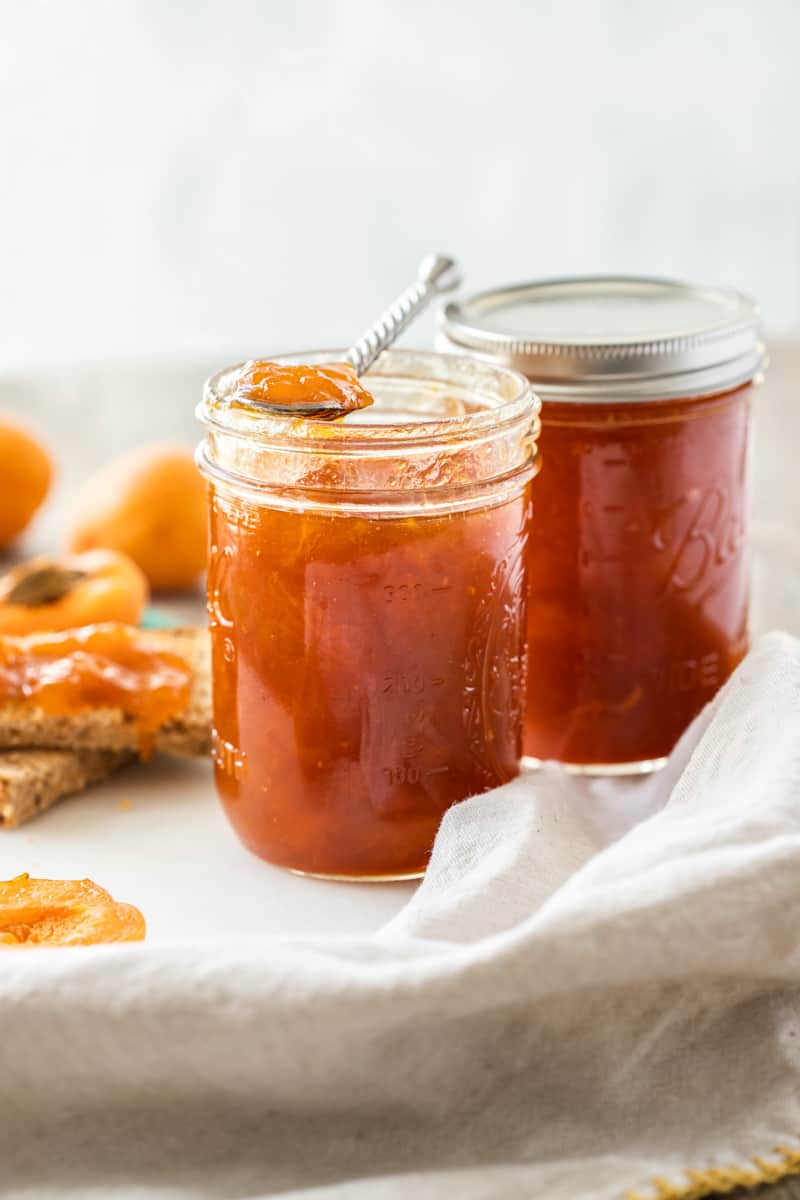
Jump to:
Why we love this recipe:
Apricot jam is incredibly easy to make and having a few jars of this condiment in your store cupboard means that you will be able to enjoy the taste of summer far beyond the season. In this recipe, I will show you, with step-by-step instructions, how easy it is to make Apricot Jam.
You will love it because:
- Homemade jam is infinitely superior to shop-bought. There are no unwelcome additives, artificial preservatives, or thickeners that you may find in a commercially prepared jam. For me, one of the most important parts of home cooking is the knowledge that I control the quality of the ingredients.
- Of the many ways in which to enjoy this beautiful jam, I particularly enjoy it in the morning with toast or a croissant. The Apricot jam is not too sweet; it is slightly tangy which I find a great way to get the day started.
- It is delicious served with scones and cream, swirled through plain yoghurt or to fill pastry cases.
Other ways to enjoy the jam are:
- Spooned onto some plain Greek yoghurt;
- Serve with pancakes;
- To glaze a fruit tart;
- On top of some porridge;
- Fill a tart case;
- To glaze a ham;
- Drizzled over fresh, tangy goat cheese.
Ingredients in this recipe:

Please see the recipe card further along in the post for exact quantities of ingredients and the full method.
Fresh apricots – select fruit which is ripe, but not too ripe, and has great flavour. Fruit that is just ripe, including some that are slightly unripe, will form a jam more easily as it is more acidic and contains more pectin which will help it to set.
Lemon juice – lemon juice has two important functions in jam making. Firstly, lemon juice is acidic and acids are important in helping the jam to set. Also, the acidity of the lemon juice helps to prevent the growth of bacteria and balances the sweetness of the sugar.
Sugar – sugar is vital to flavour the jam by sweetening it. Also, it interacts with the acids and pectin, helping the jam to set. Additionally, it has a preservative effect enabling the jam to be shelf-stable to enjoy through the months ahead.
Step by step instructions:
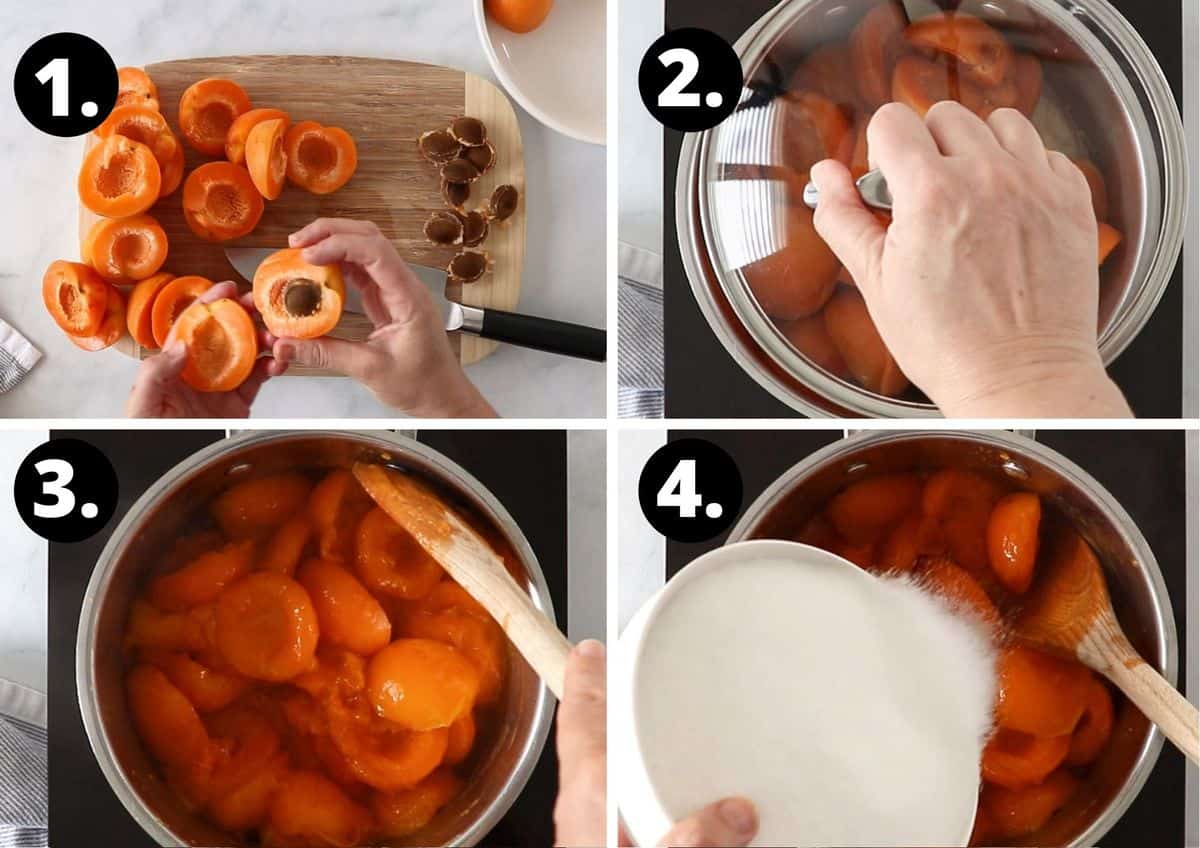
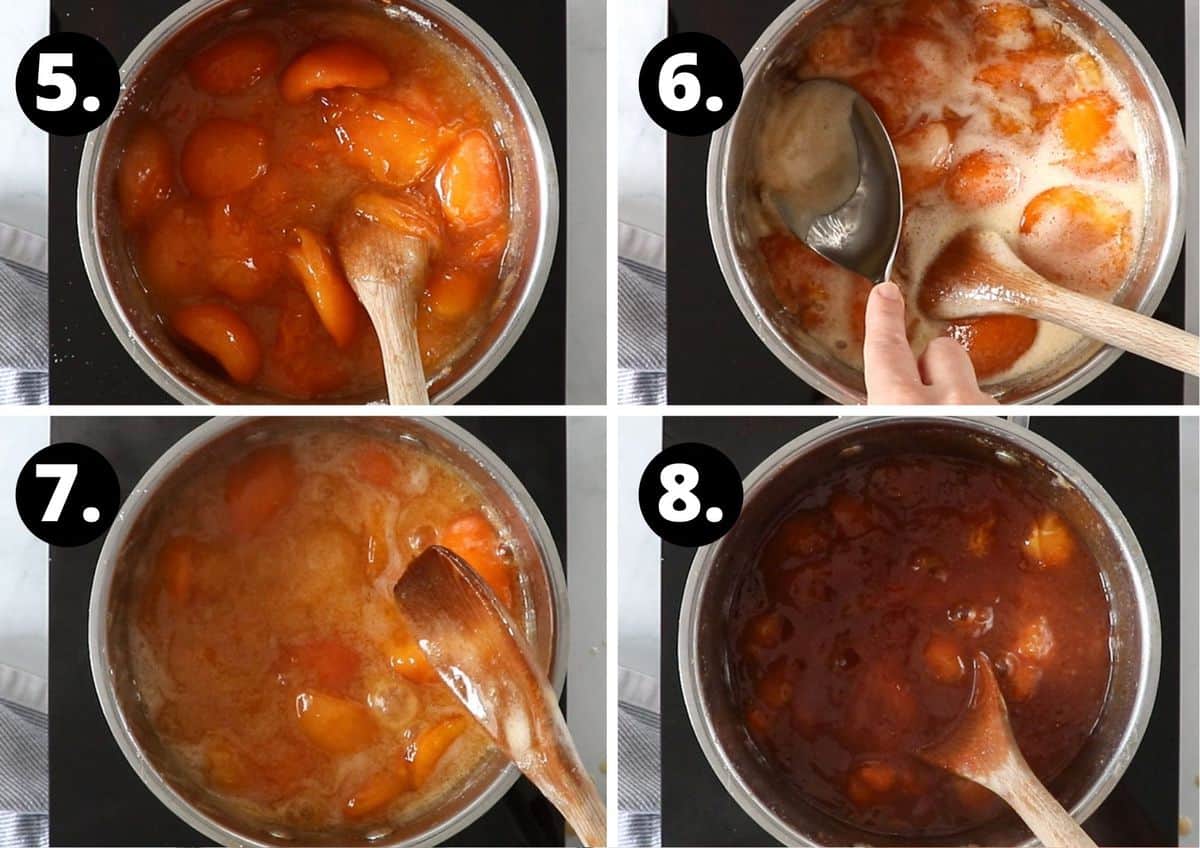

To begin, place two heatproof saucers or small plates in the freezer. Use these to test when the jam has reached setting point.
- Thoroughly wash and dry the apricots. Then, cut the apricots in half and remove the stone.
- Add the fruit to a large, wide saucepan, along with the lemon juice and a small amount of water.
- Over medium heat, bring it to a gentle simmer. The fruit will release liquid as the temperature rises. Cover the saucepan to avoid evaporation of the liquid.
- After about 10 minutes, when the fruit softens, remove the lid and add the sugar. Stir frequently to dissolve the sugar.
- When the sugar dissolves, increase the heat and bring the mixture to a rapid boil. Stir frequently to prevent the jam from catching on the bottom of the pan.
- You may find that a scum forms on the surface of the jam; this is normal, and if you wish, you can remove it by lightly skimming with a spoon. However, I have found that adding a small amount of butter at the end of cooking removes the scum.
- Keep stirring the jam mixture.
- After about 20 minutes I test for setting point.
- I use the “wrinkle ‘” test. To test, take a small amount of jam and put it onto a cold saucer. Leave for a moment to cool and then push the outer edge of the jam into the centre with your index finger.
- If the jam wrinkles, even a little, it will set. If the jam has not reached setting point, boil it for another 3 to 5 minutes and then test again.
When the Apricot Jam is ready, set it aside for about 10 minutes. This will allow the fruit pieces to be evenly distributed throughout the jam. If bottled immediately, the fruit will rise to the top of the jar.
Do not leave the jam for longer than 10 minutes. To preserve the jam, bottle it whilst it is still hot. Ladle it into the hot, sterilised jars and seal immediately.
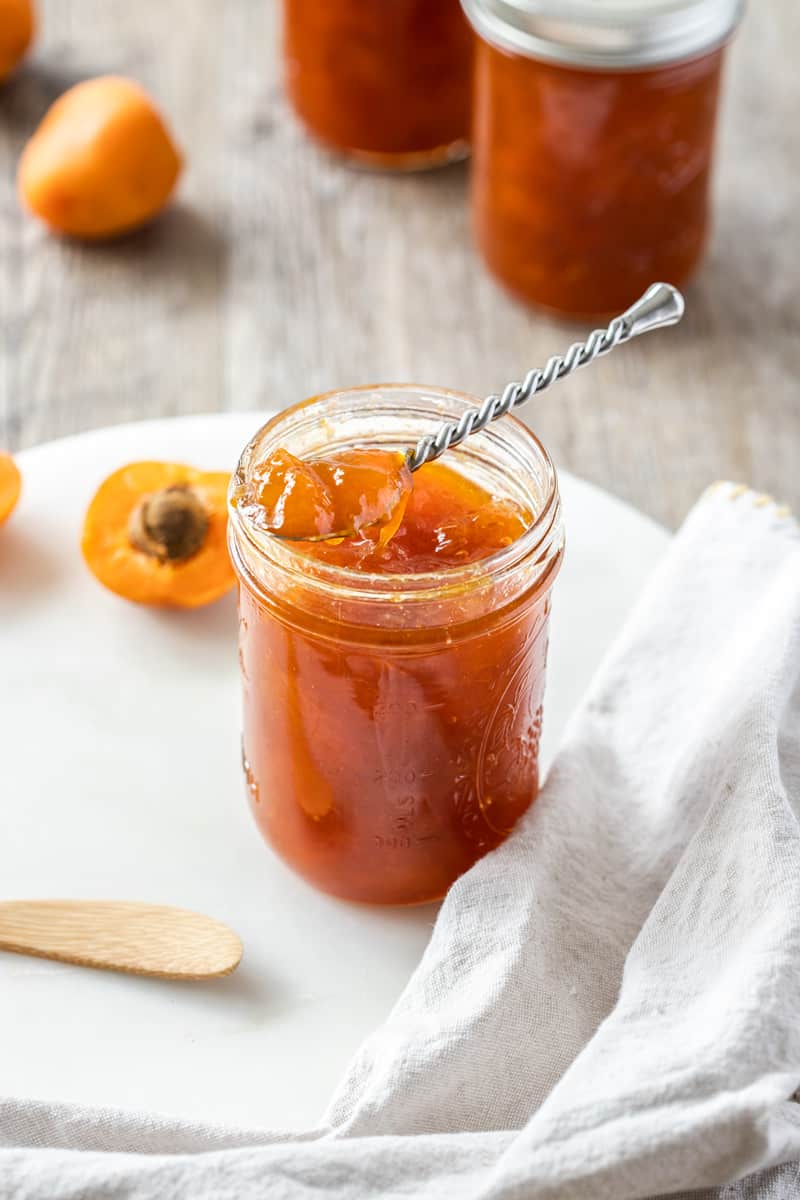
Equipment needed:
When making your own preserves, always ensure you are sterilising the jars you will store them in. This is very simple to do:
- Choose glass jars with an airtight, metal lid and ensure they have been washed in the dishwasher or by hand in hot soapy water then rinsed well.
- Check that the metal lids do not have rubber inserts, as these could melt in the oven.
- Preheat the oven to 130 Degrees C (270 F) and leave the jars for 15-20 minutes.
You can use recycled glass jars with metal lids that are in good condition or purchase new ones. Jars which have contained pickles are generally not suitable as they often hold the aroma. Save these for your own chutneys or pickles.
You will not need any special equipment to make this recipe. You need a large, wide saucepan. The large surface area allows faster water evaporation, giving the jam a concentrated flavour. Without a large saucepan, there is the risk of it boiling over.
Avoid aluminium, copper or iron pans; the acid in the fruit may react with the pan, giving the jam a metallic taste.
As well, I use a long-handled wooden spoon to keep my hand away from the bubbling jam.
Tips for success and FAQs:
Choose good quality, freshly picked fruit. Ripe apricots with firm skins will contain more pectin and give the best result. Do not use apricots that are over-ripe, soft or bruised as they may cause the jam to spoil. However, if you have some slightly unripe apricots, don’t hesitate to use them. They also assist with setting as they contain more pectin and are more acidic.
Apricots have a medium pectin content and low acidity, so to boost the acidity and pectin I add lemon juice. Lemon juice is acidic and has high pectin content and together with sugar aids with the setting of the Apricot Jam.
If you follow the recipe instructions precisely and your jars are thoroughly sterilised, the Apricot Jam should be shelf-stable for a year, possibly longer. No canning is required. When you open a jar, store it in the fridge. Always use a clean spoon to remove the jam.
Apricots have fine, smooth skin and it does not need to be removed. As well, the skins contain pectin which aids with getting the jam to set.
Conventional jam requires a lot of sugar. When you see it weighed out it is slightly alarming but please don’t reduce the amount of sugar. The sugar not only sweetens the fruit, but it helps the jam to set and acts as a preservative. If you reduce the sugar, your jam may not be shelf stable.
Lemon plays an important role in jam-making. It is high in acid and pectin, both essential for the setting of the jam. As well, the acidity of the lemon helps balance the sweetness.
Pectin is a naturally occurring starch that is found in varying degrees in fruits and vegetables. It is what makes jams and jellies firm when they are cool. When combined with acid and sugar, and cooked to a high temperature, it forms a gel.
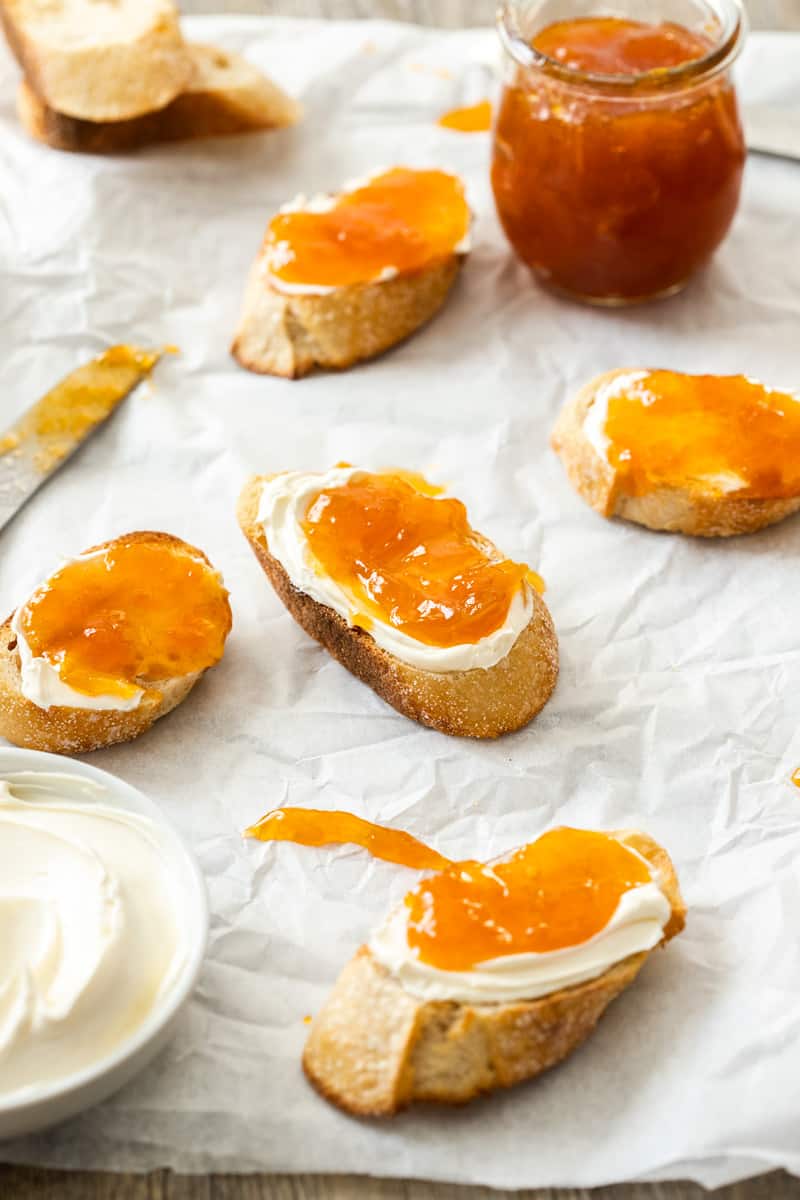
More delicious recipes for you to try:
We absolutely love making the most of in-season produce to enjoy all year round. Here are some more of our favourite preserve recipes:
- Preserved Chillies in Oil
- Fresh Peach Chutney
- Lemon Marmalade
- Sweet Chilli Sauce
- Grapefruit Marmalade
- Easy Plum Jam
- Blueberry Jam
I believe that homemade jam is a special treat. What’s more, home-made jam is the perfect way to use fruit at the peak of its season, but perhaps the best reason is that it tastes so much better than store-bought jam.
Your Apricot Jam will be able to be used in the months to come, and you will find many new ways in which to use it. Home-made jam also makes a lovely gift. For attractive presentation, cut a circle of coloured paper or cloth, place over the lid and tie with a pretty ribbon.
Please let me know in the comments below if you try this.
Alex xx
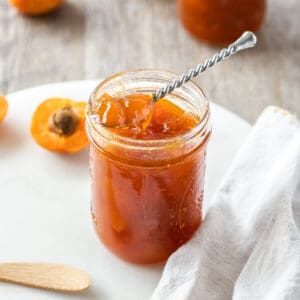
Apricot Jam
Equipment
- 12 x 250ml (8.5 oz) Jars
Recipe Measurements:
For accuracy, when weights are provided, we recommend weighing your ingredients. This will produce the best results.
Ingredients
- 2.5 kg (5.5 lb) fresh apricots – prepared weight See Notes 1 and 2
- ¼ cup (60 ml) water
- ¼ cup (60 ml) freshly squeezed lemon juice See Note 3
- 1.8 kg (4 lb) granulated sugar See Note 4
Instructions
To Sterilise the Jars:
- Preheat the oven to 130 Degrees C (270F). Use glass jars, either new or recycled, with an airtight, metal lid. If recycling jars, ensure that the jars do not have cracks or chips and the lids are in good condition. Discard any lids that are pitted or rusted. See Note 5.Wash the jars and lids. If washing by hand, use hot, soapy water and then rinse them well. Alternatively, wash them in the dishwasher.Place jars and lids on a baking tray. Heat in the oven for at least 20 minutes.
To Make the Jam:
- Put 2 small heatproof plates or saucers in the freezer to chill. See Note 6.
- Wash the apricots and pat dry. Remove any minor blemishes then cut them in half and remove the stones.
- Place the apricots in a large, wide saucepan and add the lemon juice and water. See Note 7.
- Bring to a simmer over medium heat, stirring occasionally with a long-handled wooden spoon. See Note 8.
- Cover the pot and cook, stirring frequently, until the apricots are tender and cooked through, 10-15 minutes. At this stage, if you prefer less chunky jam, you could blend it using a hand-held stick blender. Take the saucepan off the heat to do this.
- Add the sugar to the apricots and stir constantly, without boiling, until the sugar has dissolved.
- After dissolving the sugar, increase the heat and bring the fruit to a boil to cook the liquid off. Continue to cook, uncovered, stirring occasionally to make sure the mixture does not catch and burn on the bottom of the pan.As the mixture reduces, stir frequently. At this stage, the jam requires your attention so do not venture too far away from the stove. Remove any scum that forms with a spoon.
- When the jam looks thicker, after boiling for about 20 minutes, (See Note 9), turn off the heat and put a small amount of jam on a chilled plate. Let it stand for a minute to cool then push your finger through the jam. If it wrinkles, even slightly, it is ready. If it is still quite liquid put it back on the heat for a further 5 minutes and check again.
- You can also use a thermometer to check for setting point. To use this method, you will need a sugar thermometer. Clip the thermometer to the side of your pan. When the thermometer reads 104 C (220 F) the jam is ready.
- When the jam reaches setting point, remove the pan from the heat. If there is any scum on the surface of the jam, remove with a spoon or add a teaspoon of butter and stir well. It will dissolve the scum.
- Let the jam stand for about 10 minutes to allow the fruit to settle. This will ensure that any pieces of fruit will be evenly distributed throughout the jam. Without standing, the fruit will rise to the top of the jar.
- Stir the jam and carefully ladle it into the heated, sterilised jars. You need to be very careful. A splash or spill from hot jam would result in a serious burn. I recommend that you wear clothing with long sleeves. Additionally, this is not the occasion to have children nearby. Immediately seal the jars tightly with sterilised lids.
- The jam will still be liquid when you ladle it into your jars. It can take up to 48 hours to completely set. See Note 10.
- When cool, remove any spills from the jars and label with the date and name. Store the jam in a cool, dark place. It willl be shelf-stable for a year.When using the jam, always use a clean, dry spoon to avoid contamination. After opening a jar, as a further precaution, store it in the refrigerator.
Video
Notes
- You can make jam with just a small quantity of fruit. If you use a smaller quantity of fruit the jam will set in a shorter cooking time.
- It is essential to use just ripe, or some slightly unripe, fruit. Choose fruit with great flavour. Bruised or over-ripe fruit is not suitable.
- Fresh lemon juice not only balances the sweetness of the sugar, but it also helps the pectin to set the jam.
- Do not reduce the amount of sugar. The sugar not only sweetens the fruit, but it helps the jam to set and acts as a preservative. If you reduce the sugar, your jam may not be shelf-stable and may go mouldy.
- Properly sterilising your jars is an essential process to remove bacteria that could cause your preserves to spoil. Wash the jars and lids either in the dishwasher or by hand in hot soapy water, and rinse well. Do not dry them with a tea towel. Place jars and lids on a baking tray. If you are using Kilner jars with rubber seals, be sure to remove the seals before placing the jars in the oven. The dry heat of the oven would damage the seals. Boil the seals separately in a saucepan for about 10 minutes. Heat the jars in the oven for at least 20 minutes. When your preserves are ready to bottle, use thick oven mitts or jar tongs to remove the jars. Do not place them on a cold surface as they may shatter. I place mine on a wooden chopping board which I cover with a tea towel. Always sterilise a few more jars than you think you will need. It is better to have too many jars than not enough.
- The chilled plates are used to quickly cool the jam when testing the setting point.
- Always choose your widest saucepan that has enough height to enable the jam to boil vigorously. The fruit should not come more than halfway up the sides of the saucepan. More surface area means the liquid can evaporate faster and having sufficient height means you can boil the jam at a higher heat. Avoid aluminium, copper or iron pans; the acid in the fruit may react with the pan, giving the jam a metallic taste.
- To stir, use a long-handled wooden spoon. Metal will become dangerously hot. A long-handled spoon helps to keep your hand away from the boiling jam.
- The amount of time to reach setting point will vary depending on the amount of fruit, the size of your saucepan and the heat that you apply. However, if boiled too long the pectin may be destroyed and the jam may not set.
- If your finished jam has not set as much as you would like, don’t worry, it will still be delicious stirred into some plain yoghurt or served over our No-churn Vanilla Ice Cream. Or, if it is slightly over-set and is very firm, it will be a lovely accompaniment on a cheese board.
- Please note, the nutritional information is based on one entire jar. The nutritional information is an estimate only.
Nutrition Estimate:
Nutritional Disclaimer:
The nutritional information is an estimate only, and is derived from online calculators. For accurate results, we recommend calculating the nutritional information based on the ingredients and brands you use.



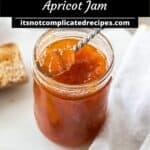

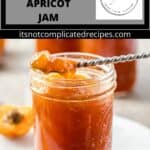
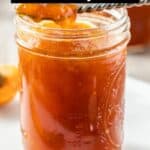





Leave a Comment